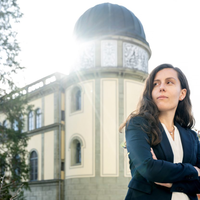Energy & sustainability
Awais Ahmed
Capturing orbital images in more than 150 wavelengths from the visible and infrared spectrum.

Europe
Alisha Fredriksson
Co-founder and CEO of Seabound

Asia Pacific
Fan Wu
Developing ulfide all-solid-state batteries and related key materials.

China
Xianbiao Fu
A continuous electrosynthesis of ammonia from N2 reduction and H2 oxidation at ambient pressure and temperatures.

Europe
Freideriki (Frida) Michailidou
Researcher and lecturer at ETH Zurich in Switzerland
